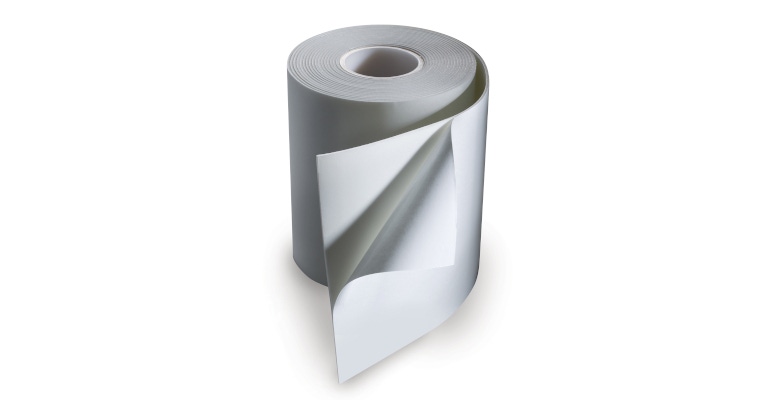Why Consider X-Ray Sterilization?
Learn why X-ray irradiation is being considered as an alternative method to sterilize some polymer-based medical devices, such as wound care dressings, wearables, and ostomy appliances.

With evolving news headlines about COVID-19, the mention of supply-chain shortages in the medical industry brings to mind surgical masks, protective equipment, and virus test kits. Yet since this time last year, there also have been headlines about supply-chain risks of another kind—those related to temporary or permanent closures of ethylene oxide (EtO) sterilization facilities. Several large EtO sterilization facilities in the United States have shuttered or temporarily halted operations due to environmental concerns about potentially dangerous air emissions. As a result, the U.S. FDA has been monitoring supply-chain interruption risks for devices that would typically be sterilized at those facilities. At the same time, medical device manufacturers and their extended supply chains have been prompted to reconsider their sterilization methods. According to FDA, more than 20 billion devices sold in the United States annually are sterilized with EtO, or about 50 percent of devices requiring sterilization.1
Sterilization Basics
One of the last steps in the supply chain, sterilization usually takes place after a device has been manufactured and packaged, before it ships to a storage or end-use destination. The purpose of sterilization is to eliminate all living microorganisms on a device so that it is free from any contamination. By killing all microorganisms, sterilization helps prevent any potentially harmful ones from reproducing and spreading infection when the device is used on a patient or in a healthcare setting. Most device makers outsource the sterilization process to large contractors with specialized equipment and facilities.
This article focuses on sterilization methods, including EtO, gamma irradiation, and X-ray, that are viable for use on devices containing plastic films, papers, and nonwoven materials, including medical-grade pressure-sensitive adhesives. Such materials are commonly found in disposable medical products, wound care dressings, ostomy appliances, surgical drapes, wearables, and patient monitoring devices. Many polymer resin-based devices like these products cannot withstand hot-steam sterilization, a popular method without the risks of some other processes.
The Issues with EtO
EtO gas kills microorganisms on contact. EtO is classified as a human carcinogen by EPA. Facilities using this sterilization technique must meet stringent environmental standards to protect their workforces and surrounding communities.
A number of EtO operations closed in 2019 given concerns about emissions. Announcements were made that some plants would not reopen, whereas others would be building EtO emission reduction equipment or making emission-control enhancements. 2,3 Some operations reopened under an FDA Emergency Use Authorization or a pandemic-related emergency order. 4,5
Beyond the emissions risks, EtO sterilization poses additional challenges to device makers when they go to prove that their products have been successfully sterilized. They must not only provide evidence that EtO gas has killed all microorganisms, but they must also confirm there are no toxic EtO residual gasses trapped within the device and its packaging. A process called off-gassing is used to eliminate these residual gasses, but it still can be difficult to validate a successful EtO cycle for some products. Moreover, if there is an impermeable release liner protecting an adhesive material, there can be concerns about whether a device’s adhesive surface, the one that ultimately will touch the patient, has been effectively sterilized.

No Method Is Perfect
While EtO environmental risks and related supply-chain interruptions are currently in the spotlight, it’s important to note that every sterilization method has pros and cons. The hot-steam sterilization process poses low safety risks, but its high temperatures and moisture levels are too intense for most plastic and paper materials.
Another sterilization method, gamma irradiation, can be used on polymeric materials, but it is harsher than EtO treatment. The ionizing radiation can degrade the materials, sometimes causing them to become yellow and brittle. The gamma irradiation process also consumes the radioactive material cobalt-60, which is in short supply globally and highly regulated and poses environmental and health risks if not managed properly.
X-ray Sterilization: Another Option
Given short-term and long-term concerns with both EtO and gamma irradiation methods, X-ray sterilization, also known as X-ray irradiation processing, has emerged as an alternative method. It is gentler on polymeric materials than gamma irradiation, and it does not have the emission dangers of EtO.
“The commercial use of X-ray irradiation began around 20 years ago. However, due to the low power output of the accelerators used, the technology was generally overlooked as a viable sterilization method,” according to STERIS Applied Sterilization Technologies, which provides a variety of contract sterilization services, including X-ray. “Now, with the introduction of high power, high energy accelerators, we are able to offer X-ray irradiation technology at a commercial level equivalent to traditional sterilization methods.”6
With the latest X-ray technology, sterilization contractors can achieve better penetration than they could with gamma irradiation with less impact to product materials, according to STERIS. One reason is that there is a shorter exposure time required to kill microorganisms. High-energy X-rays can be used to irradiate large packages and pallet loads of medical devices, STERIS reports.7
While there are no air emissions or residual waste products from this sterilization method, there are some barriers to entry for X-ray irradiation processing. Contractors looking to use this method will need to make significant capital investment in a high-power electron accelerator, conveyor systems, and other equipment. As a radiation-based sterilization method, X-ray irradiation also requires biologic shields to protect workers from damaging rays. There is a very small possibility that X-ray radiation could induce radioactivity in medical products, but this risk can be mitigated by careful control of energy levels.8
Conclusions
Medical device sterilization methods will continue to evolve as the industry develops new standards and solutions that are economical, environmentally sustainable, safe, and effective. In fact, FDA has launched innovation challenges to encourage the development of new and improved sterilization methods.
During material selection, product development, manufacturing, or any point in the product lifecycle, it’s important to have a proactive dialogue about sterilization with all suppliers. Advanced medical material suppliers should be prepared to discuss how different sterilization methods affect their products. Some may be able to supply laboratory test data to show how materials across their product range maintain properties and performance after treatment with X-ray irradiation.
With close collaboration, partners across the medical supply chain can ensure materials used today and developed for future devices are compatible with next-generation sterilization methods.
References
“Statement on concerns with medical device availability due to certain sterilization facility closures,” U.S. Food and Drug Administration, Oct. 25, 2019.
Ethylene Oxide Sterilization Facility Updates, U.S. Food and Drug Administration, Jan. 28, 2020.
Ethylene Oxide (EtO) Safety at BD, including “BD Statement on Agreement with State of Georgia to Maintain Availability for Patients,” Oct. 28, 2019.
“Medical device sterilizers ask to use EtO to boost hospital mask supply; activists call for FDA to block it,” Cook County Record, April 17, 2020.
Latest on Sterigenics plant situation. Cobb County, Ga., government website, April 8, 2020.
X-ray Irradiation Processing, STERIS Applied Sterilization Technologies website, accessed March 11, 2020.
“X-ray Radiation Processing,” STERIS Applied Sterilization Technologies presentation, February 2019.
“A Comparison of Gamma, E-beam, X-ray and Ethylene Oxide Technologies for the Industrial Sterilization of Medical Devices and Healthcare Products,” International Irradiation Association and Gamma Industry Processing Alliance white paper, Aug. 31, 2017.
About the Author(s)
You May Also Like




